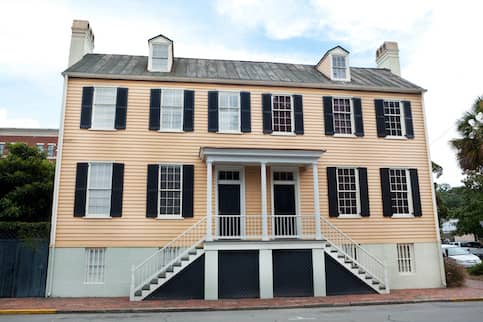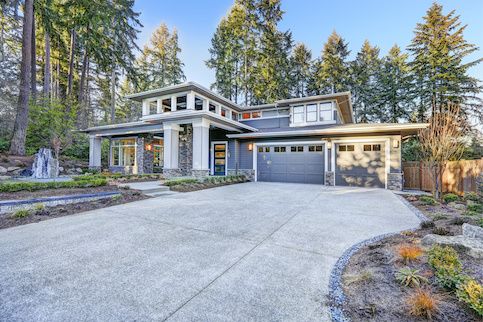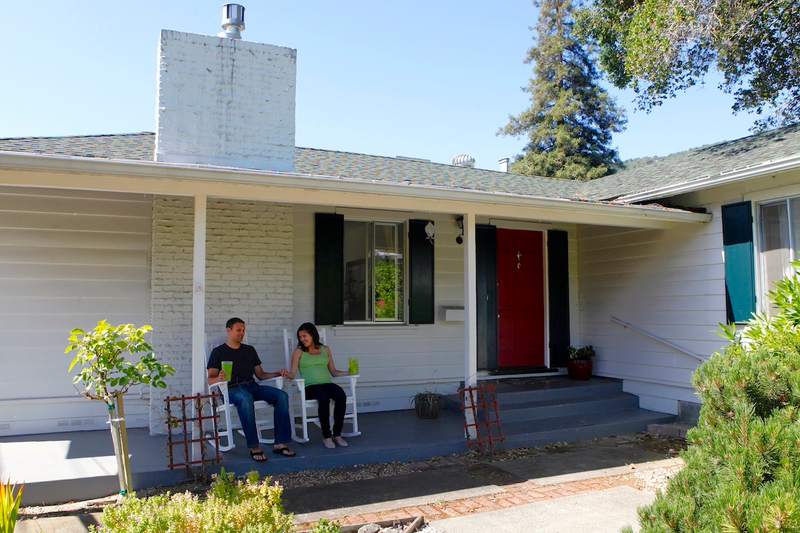Need to buy a house but don’t want to pay for private mortgage insurance? Or maybe you’re building a house and you need to fund the construction of your new dream home? A combination loan might help you reach your goals. While our friends at Rocket Mortgage® don’t offer combination loans, it’s important to understand what they are if you’re seeking this type of financing.
What Is A Combination Mortgage?
A combination loan is really two separate loans, both issued by the same lender. The loans that make up this combination, though, vary depending on whether you’re building a home or buying an existing one.
See What You Qualify For
Buy A Home
Discover mortgage options that fit your unique financial needs.

Refinance
Refinance your mortgage to have more money for what matters.
Tap Into Equity
Use your home’s equity and unlock cash to achieve your goals.
How Does A Combination Loan Work?
As mentioned above, there are two situations where a combination mortgage loan may make sense. Here’s how these loans would work.
When Building A New Home
If you’re building a home, you’ll first take out a construction loan that pays your builder while they’re overseeing the construction of your new residence. This is often an adjustable rate mortgage (ARM), one with an interest rate that fluctuates based on the performance of whatever economic index it is tied to.
Once construction crews finish building your home, your lender will provide you with a standard mortgage loan, often a 30-year mortgage with a fixed interest rate. This loan will replace the construction loan. You’ll use the funds from the new loan to pay off that first loan, and you’ll then make monthly payments, with interest, on your new mortgage until you pay it off.
When Buying An Existing Home
Combination loans work differently when you’re buying an existing home.
When taking out a combination mortgage on an existing home, borrowers usually take out an 80-10-10 piggyback loan. A “piggyback loan” is shorthand for when a borrower wants to take out a first and second mortgage at the same time. In this type of loan arrangement, borrowers take out a first mortgage, usually a 30-year or 15-year fixed-rate loan, which covers 80% of the home’s purchase price. They take out a second mortgage loan, usually with a higher interest rate, which covers an additional 10% of the home’s purchase price. They then provide a down payment of 10%.
Borrowers, then, make two separate payments each month to their lender, paying off both their first mortgage covering 80% of the home’s purchase price and the second, smaller, mortgage that covers 10% of the residence’s price. This might be more work, but it can help buyers who want to avoid private mortgage insurance (PMI), as well as providing other benefits.
Find A Mortgage Today and Lock In Your Rate!
Get matched with a lender that will work for your financial situation.
The Pros And Cons Of Combination Loans
Combination loans can be helpful for some borrowers. It’s important to know, though, that they do come with some drawbacks, too.
The Pros Of Combination Loans
The pros of combination loans typically lie in the problems they offer to solve for existing home buyers.
You Can Avoid Private Mortgage Insurance (PMI)
The main benefit of a combination loan is that you can avoid paying for private mortgage insurance (PMI), even if you can’t come up with a down payment of 20% of your home’s purchase price. This may be useful for homeowners because a second loan allows them to build equity, while PMI doesn’t.
You Can Avoid Getting A Jumbo Loan
A jumbo loan, as its name suggests, is a mortgage loan that is larger than usual. Each year, the Federal Housing Finance Administration, or FHFA, sets conforming loan limits for mortgages that will be acquired by government sponsored enterprises that back mortgages, such as Fannie Mae or Freddie Mac.
If you need a mortgage for more than these amounts, depending on where you live, you’ll need to take out a jumbo loan, which can come with higher interest rates and may require a higher down payment. By taking out a combination loan, you might be able to avoid a single, more expensive jumbo loan.
The Cons Of Combination Loans
The cons of combination loans tend to come from the additional costs they typically incur.
You May Pay Double The Loan Servicing Fees
This might vary by lender, but because you’re taking out two mortgage loans, you might have to pay two sets of servicing fees when you need to do things such as order documents from your lender or verify your mortgage.
You’ll Have Two Loan Payments To Manage
Two loans mean you’ll be making two loan payments. You’ll have to manage not one but two mortgage payments each month. Depending on your organizational skills, this could be challenging.
You May Pay More For Loan Interest
The second loan in a combination mortgage typically comes with a higher interest rate. If that rate is too high, you might spend more with a combination loan than you would with a single mortgage with PMI. You’ll need to do the math to determine which choice is less expensive.
Alternate Options To A Combination Loan
A combination loan isn’t the right choice for everyone. In fact, there are other loan types that might save you more money, thanks to lower interest rates, even if you do have to pay some form of mortgage insurance.
Conventional Loans
Conventional mortgage loans are not insured by a government agency. Most mortgages originated in the United States are conventional. The credit score and debt requirements needed to qualify for one of these loans vary by lender, but you can generally qualify for a conventional mortgage if your FICO® Score is at least 620 and your debt-to-income (DTI) ratio is no more than 50%.
You don’t need a 20% down payment to qualify for a conventional loan. Some conventional loan programs allow you to put down just 3% of your home’s purchase price. Remember, though, if you come up with a down payment that is less than 20% of your home’s price, you will have to pay PMI.
FHA Loans
FHA loans, insured by the Federal Housing Administration, are a great alternative because if your FICO® credit score is at least 580, you’ll only have to come up with a down payment of 3.5% of your home’s purchase price.
FHA loans also don’t require PMI, though they do require upfront and annual mortgage insurance premiums (MIP), The upfront mortgage insurance premium is 1.75% of your loan amount and the annual MIP varies depending on the loan-to-value ratio of your loan and the term of your mortgage. This premium often remains in place throughout the life of your loan.
USDA And VA Loans
Both USDA and VA loans are attractive because they don’t require down payments. There is a catch, though: Not everyone can qualify for these loans.
To qualify for a VA loan, insured by the U.S. Department of Veterans Affairs, you’ll need to be a member or veteran of the U.S. Military or the widowed spouse of a military veteran who died because of his or her service. To qualify for a USDA loan, insured by the U.S. Department of Agriculture, you need to buy a home in a rural part of the country.
VA loans don’t require PMI, which is one definite benefit. But you will have to pay a one-time VA funding fee.
USDA loans don’t require PMI, either, but you will have to pay an upfront guarantee fee equal to 1% of your loan amount and an annual fee of 0.35% of your loan amount each year.
Combination Loan FAQs
Here are the answers to some common questions about combination loans.
Can I refinance a combination loan into a single mortgage?
Yes, you can refinance multiple loans into a single mortgage, as long as you have enough available equity in your home to cover the combined-loan-to-value (CLTV) for both mortgages.
Are all piggyback loans fixed-rate mortgages?
Sometimes a lender will require that the 10% loan in an 80-10-10 loan will be an ARM. This may cost you more in the long run if interest rates go up over the life of the loan.
Are 80-10-10 loans the only piggyback loans available?
No, some lenders may allow you to borrow using a 75-15-10 structure where the borrower takes out loans of 75% and 15% and pays 10% down. This may be necessary when using a piggyback loan to buy a home that exceeds the conforming loan limits by more than 80% or when purchasing an investment property.
The Bottom Line: Is A Combination Loan Right For You?
If you’re ready to buy a home, it makes sense to consider all mortgage loan types, including combination mortgages. Remember, though, that these loans do come with some drawbacks and that conventional or government options might be a better choice. Your best move is to get started to determine which type of home loan best fits your needs.
Find A Mortgage Today and Lock In Your Rate!
Get matched with a lender that will work for your financial situation.

Miranda Crace
Miranda Crace is a Staff Writer for Rocket Companies, bringing a wealth of knowledge about mortgages, personal finance, real estate and personal loans for over 10 years. Miranda is dedicated to advancing financial literacy and empowering individuals to achieve their financial and homeownership goals. She graduated from Wayne State University, where she studied PR writing, film production and film editing. In her spare time, Miranda enjoys traveling, actively engages in the entrepreneurial community, and savors a perfectly brewed cup of coffee.












